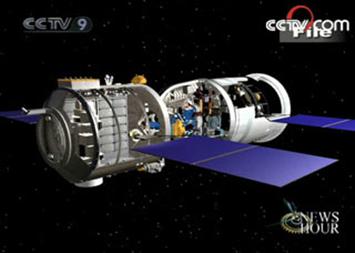Chinese Space Program 5 - History 5
In my last blog post I brought my coverage of the Chinese Space Program up to 2002 and the final unmanned launched of a space craft capable of taking astronauts to orbit. Today, I am going to talk about the first manned missions launched by the Chinese.
The Chinese launched four uncrewed missions with spacecraft capable of carrying astronauts to test life-support and other critical components of their manned craft, the Shenzhou. The last uncrewed launch involved the Shenzhou 4, a complete version of a crewed spacecraft. The launch took place in December of 2002 and the mission was successful.
In late 2003, the stage was set for the launch of the Shenzhou 5, China's first attempt to launch human beings into orbit. The Shenzhou 5 weighed seventeen hundred pounds and carried a single man crew. It was carried into orbit by a Long March 2F rocket. The mission lasted less than a day and only completed fourteen orbits before returning to Earth. The Chinese media devoted a great deal of time bragging about the mission. China had become the third nation, behind the U.S. and the U.S.S.R., to launch a human being into orbit.
Although U.S. official publicly congratulated China on its achievement, U.S. policy since 2000 had been an embargo on any cooperation with the Chinese space program. The U.S. was afraid that U.S. space technology might be acquired by the Chinese and passed along to nations such as North Korea, Iran or Syria for military use. The U.S. government also opposed the use of Chinese launch capabilities by non-Chinese commercial interests. Various sorts of financial penalties have been used to punish U.S. companies that broke the U.S. embargo on the Chinese space program.
The Shenzhou 6 spacecraft was launched on October of 2005 shortly before the anniversary of the launch of Shenzhou 5. The Shenzhou 6 was sent into orbit aboard a Long March 2F rocket. This mission carried two crew members. It lasted five days and completed seventy five orbits of the Earth before returning. The crew carried out various experiments and changed orbit several times to test maneuverability. Details of the mission were kept secret by the Chinese.
The Shenzhou 7 spacecraft was the last in the Shenzhou series of launches. It was launched on a Long March 2F rocket in September of 2008 with a crew of three and marked the third manned spaceflight for China. The mission lasted three days. During the mission, a Chinese astronaut left the spacecraft for twenty two minutes, the first time any Chinese astronaut engaged in a Extra-vehicular Activity or EVA. The Shenzhou changed from its original elliptical orbit to a more circular orbit during the mission. A small satellite was launched from the spacecraft. The Chinese also launched a satellite to facilitate communication with the Shenzhou 7. The Shenzhou 7 passed within forty five miles of the International Space Station but the Chinese would not answer questions about the close passage. With the landing of the Shenzhou 7, the first phase of China's manned space flight program ended.
Shenzhou 7:
